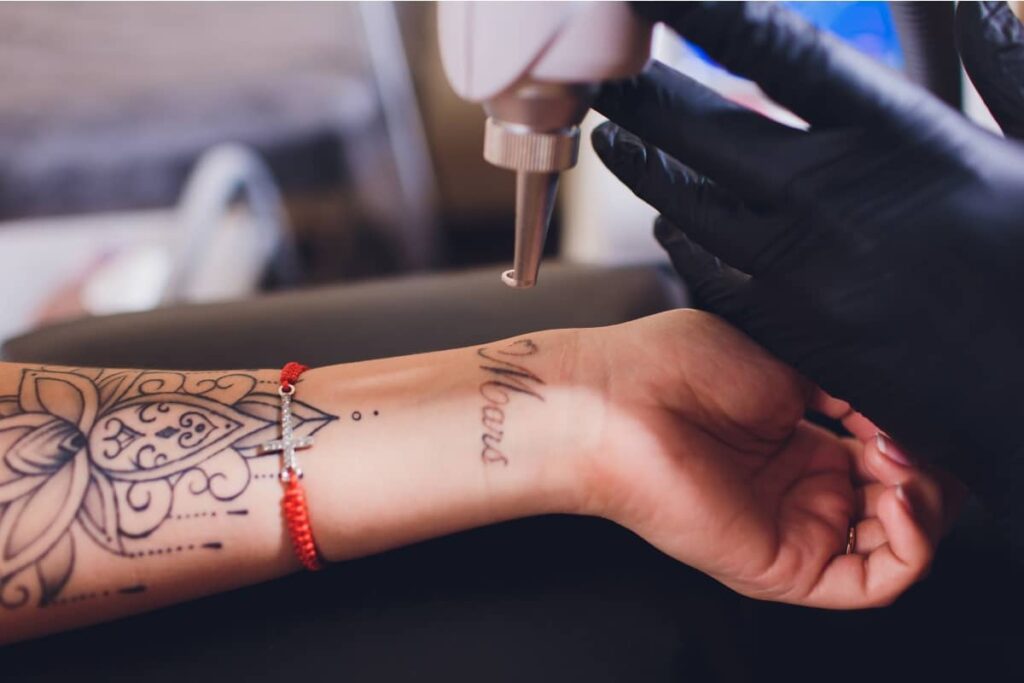How does tattooing work?
The principle of tattooing is very simple. A tattoo is created by injecting coloured pigments (using a sterile needle) into the dermis (0.5 to 4 mm under the skin). These pigments then remain in the skin permanently. They are trapped in cells and cannot be resorbed by the body. The ink is deposited and the colour appears through the skin.
What are the consequences of a tattoo that has not aged well?
Tattoos inevitably age at the same time as our bodies and our skin. But a tattoo ages badly mainly because of repeated exposure to the sun or because of major variations in weight that stretch and deform the tattoo.
Obviously, the ageing of a tattoo differs from person to person: their age, their skin type. But it’s also the type of tattoo and its location that determines the ageing process. It’s important to know that black ink is more resistant to time and that certain areas of the body are less affected by skin ageing (back, ankle, calf, shoulder).
A tattoo that has not aged well can be recognised by these factors:
- Diffused ink
- Erased details
- Muted, lacklustre or faded colours
- Distorted or blurred appearance
- Lines less sharp
- Thicker tattoo
- Illegible lettering
What types of tattoo can be removed by laser?
If you want to get rid of a tattoo that has aged badly, laser removal is often the preferred solution. However, not all types of tattoo can be removed effectively using this method. Clinique Bellefontaine has acquired the revolutionary Picoplus laser technology, which is even more powerful than a simple Pico laser. This laser is in fact the most powerful on the market. It can treat all types of tattoo, in all depths and colours. But black and blue tattoos can be removed more easily.
The laser’s targeted rays reduce the ink particles in the skin to tiny pieces. These particles can then be naturally evacuated by the body through the lymphatic fluid. The laser wavelength is determined by the colour of the tattoo.
How many sessions are needed to remove a tattoo?
The number of sessions required to remove a permanent tattoo depends on several factors:
-
- The size of the tattoo
- The colours used
- The depth of the pigments
In general, several sessions are required, spaced at least 6 weeks apart to obtain optimum results. But it’s important to understand that each tattoo is unique, and that an examination of the tattoo is necessary to define a precise treatment protocol.
In all cases, laser removal is a delicate procedure that requires the right expertise and equipment to achieve satisfactory results. It is vital to choose a qualified and experienced clinic or professional centre.
Using the very latest PicoPlus laser technology, Dr Favre’s Clinique Bellefontaine has created a special procedure that reduces the number of treatments required. In fact, two laser treatments can be carried out in a single session. Its light pulses are 100 times faster, making the treatment highly effective, while reducing the risks to the skin and the pain.
For more information on tattoo removal, the Clinique Bellefontaine and its professional team warmly welcome you and will accompany you before, during and after your laser treatment.


